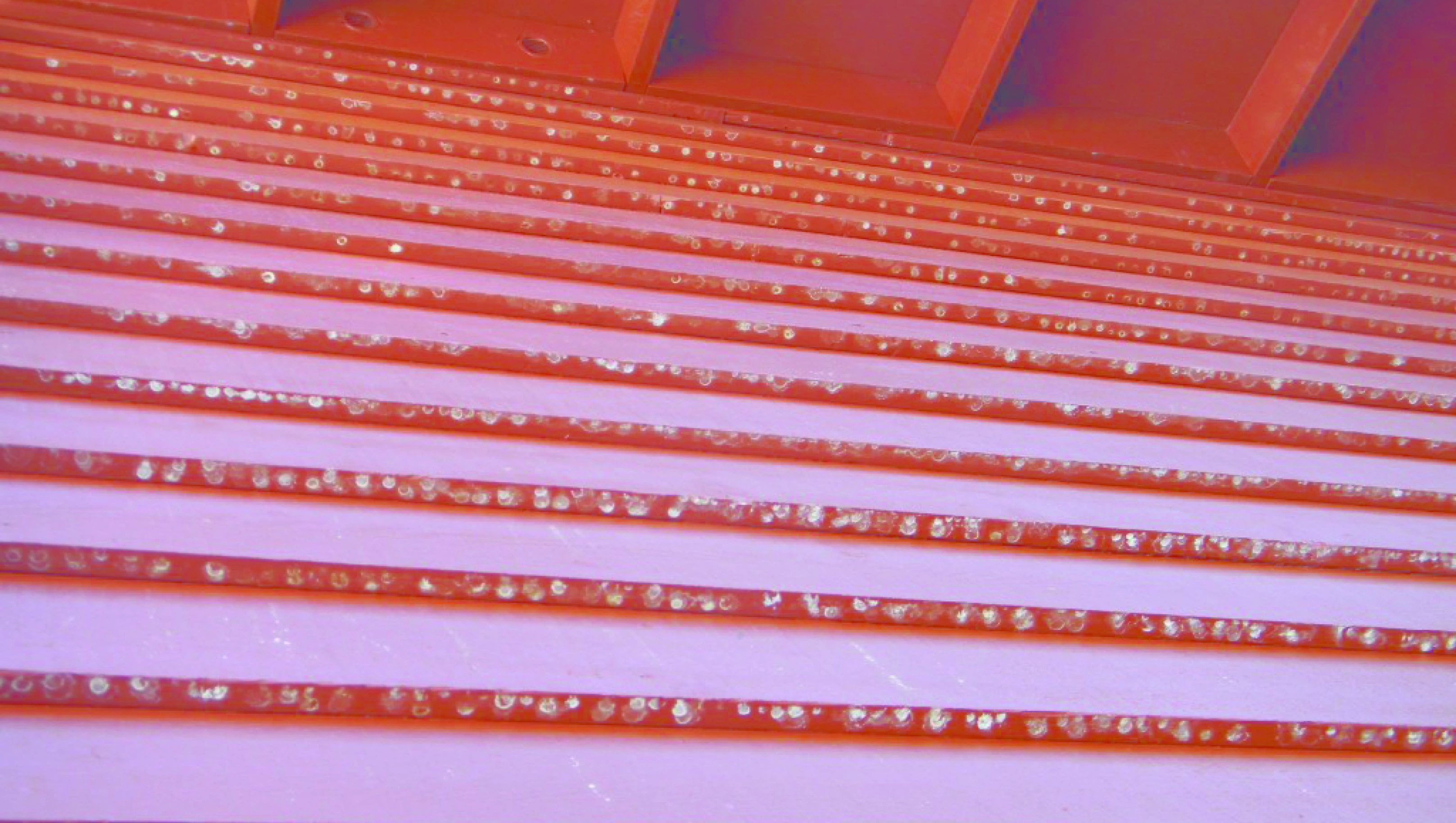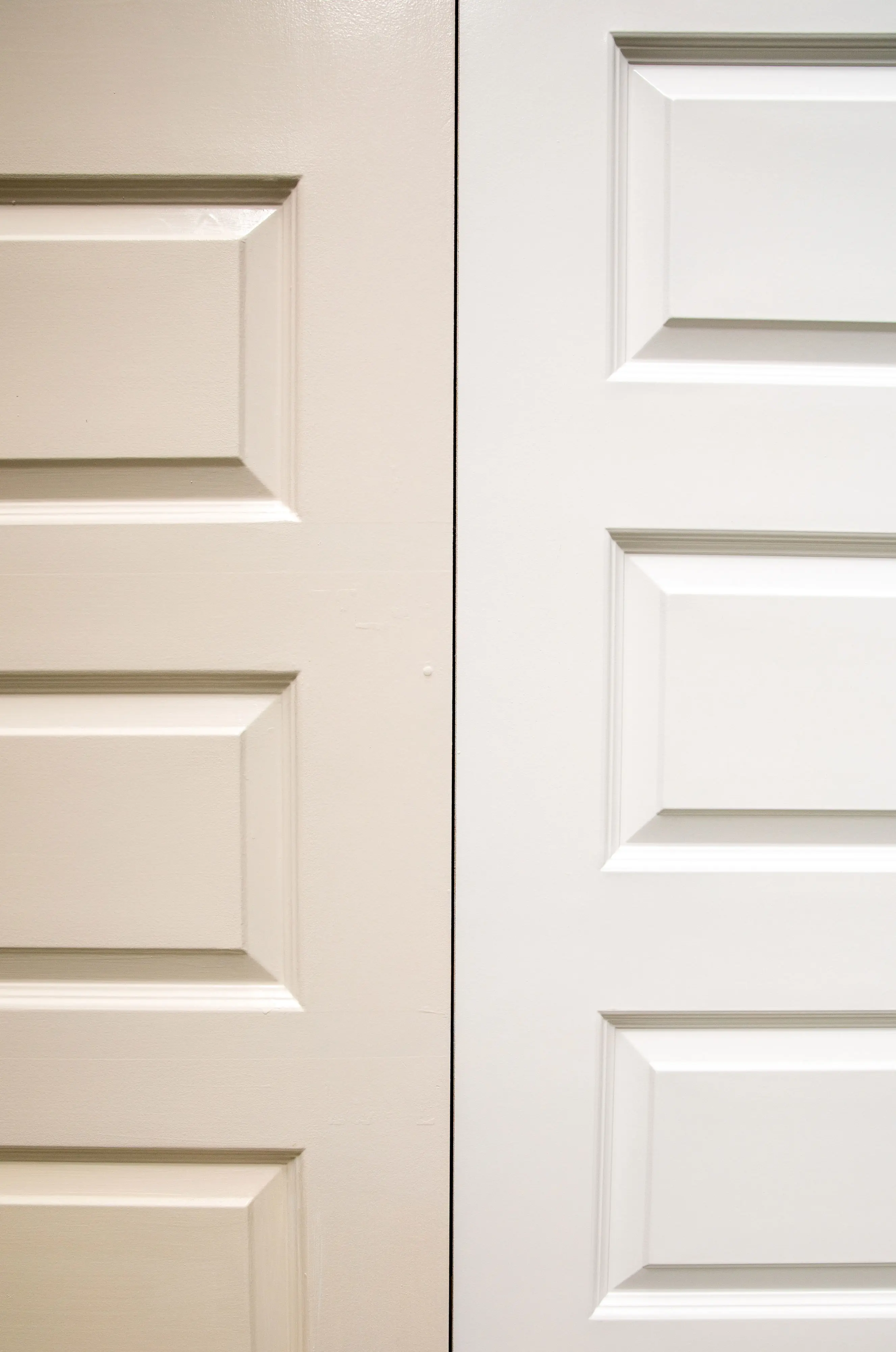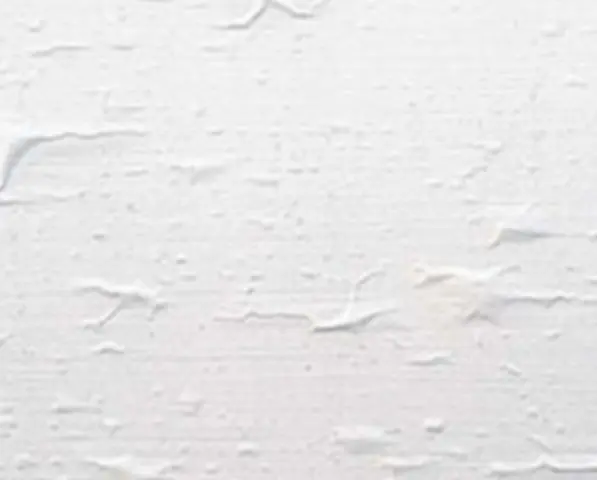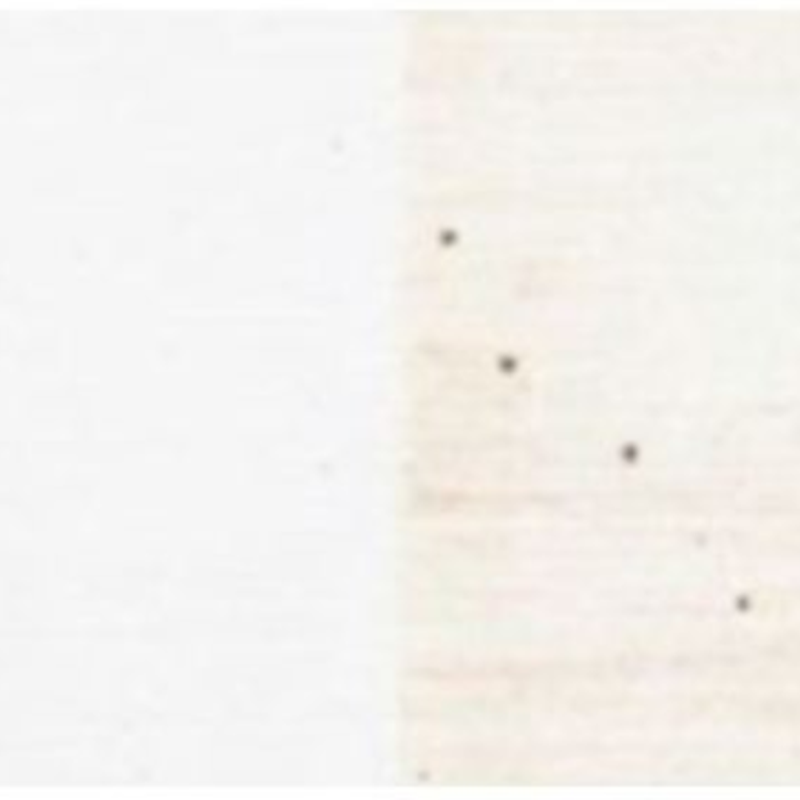Lapping
Appearance of a denser colour or higher gloss where wet and dry layers overlap during paint application.

Possible cause
Failure to maintain a 'wet edge' when applying paint
Solution
Maintain a wet edge when painting by applying paint toward the unpainted area and then back into the just-painted surface. This technique (brushing from "wet to dry," rather than vice versa) will help produce a smooth, uniform appearance.
It is also wise to minimise the area being painted and plan for interruptions at a natural break, such as a window, door or corner (especially important when applying stain to bare wood). Solvent-based paints generally have superior wet edge properties.
More problem solving advice
When droplets appear on acrylic paint
Have you noticed small droplets appearing on your fresh coat of acrylic paint? Don't panic – it’s a normal part of the curing process. Find out more.
Yellowing
Yellowing describes the development of a yellow cast in ageing paint solvent-based enamels.
Wrinkling
Wrinkling is a term to describe a rough, crinkled paint surface, which occurs when uncured paint forms a 'skin'.
Tannin staining
Tannin staining is the brownish or tan discoloration on a painted surface due to migration of tannins from the substrate through the paint film.



